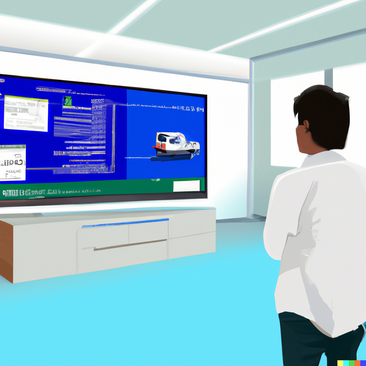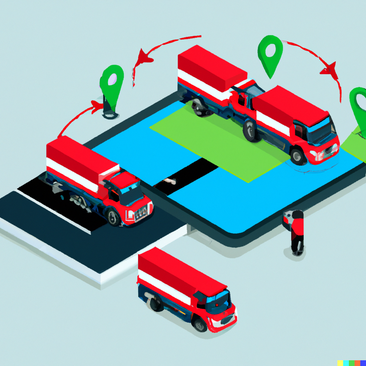Domain Description
Data analysis is a critical domain in modern industries, driving decision-making processes, uncovering patterns, and supporting strategies through the effective use of data. At its core, data analysis involves collecting, processing, cleaning, and modeling data to draw actionable insights. This domain spans multiple sectors, including finance, healthcare, marketing, and technology, where data is a valuable resource for improving products, services, and business outcomes. A related concept in this domain is data scraping, which refers to the automated process of extracting structured data from websites or other digital sources for analysis and application.
Data analysis plays an essential role in enabling organizations to understand historical data, predict future trends, and optimize operations. It involves a combination of statistical techniques, computational methods, and data visualization tools that transform raw data into digestible insights.
What the Domain Includes
In our approach to data analysis, we encompass several key sub-domains:
- Data Scraping: This process involves extracting large volumes of data from websites, databases, or APIs. Tools like Python's BeautifulSoup, Scrapy, or Puppeteer are commonly used for this task. The data scraped is often used for various purposes, including market research, sentiment analysis, or competitive intelligence.
- Data Processing: Once data is collected, it must be processed and cleaned to ensure quality and reliability. This involves removing duplicates, handling missing values, and ensuring consistency in the dataset.
- Statistical Analysis: Statistical methods, such as regression analysis, hypothesis testing, and probability distributions, are often employed to understand relationships within data. These techniques form the basis of data interpretation and are essential for identifying trends or patterns.
- Predictive Analytics: This is the use of historical data to make predictions about future outcomes. Machine learning models such as linear regression, decision trees, and neural networks are applied to predict trends and behavior, often used in areas like finance, marketing, and healthcare.
- Data Visualization: To make the insights from data more accessible, tools like Tableau, Power BI, or matplotlib are used to create visual representations of the data. Charts, graphs, and dashboards allow decision-makers to quickly understand complex datasets.
Common Software Solutions in This Domain
Building software for data analysis involves developing a variety of tools and systems that enable the efficient handling of large datasets. Common types of software in this domain include:
- Data Scraping Tools: Tools like Scrapy, BeautifulSoup, Selenium, and Puppeteer are widely used to collect data from web pages, APIs, and other online sources. These tools need to handle dynamic content, manage cookies, and sometimes bypass anti-scraping measures.
- Data Cleaning and Preparation: Libraries such as pandas (Python) or dplyr (R) are used to clean and prepare data for analysis. These libraries offer tools for filtering, transforming, and merging datasets, ensuring the data is structured for deeper analysis.
- Statistical and Analytical Tools: Software like R, SPSS, and Python (NumPy, SciPy) are used to apply statistical models to datasets. These tools enable users to run complex analyses, such as time-series analysis, hypothesis testing, and multivariate analysis.
- Machine Learning and Predictive Analytics: Machine learning platforms like TensorFlow, scikit-learn, and PyTorch provide tools for developing predictive models. These models can be used to forecast trends, predict consumer behavior, or automate decision-making processes.
- Data Visualization Tools: Tools such as Tableau, Power BI, D3.js, and matplotlib help users present data in a visually appealing and intuitive format. These tools support the creation of interactive dashboards, reports, and data stories, allowing non-technical stakeholders to engage with the data effectively.
Challenges in the Domain
Working in data analysis and data scraping presents several challenges:
- Data Quality and Cleaning: Raw data is often messy, with inconsistencies, missing values, and errors. Cleaning and preparing this data is one of the most time-consuming and critical tasks in the analysis process, as poor data quality can lead to inaccurate results.
- Scalability: As the volume of data increases, systems need to be scalable. Handling big data requires efficient processing techniques and often involves distributed computing platforms such as Hadoop or Spark.
- Data Privacy and Ethics: Data collection, especially through scraping, raises concerns about privacy and compliance with regulations like GDPR or CCPA. Ensuring that data is collected, processed, and analyzed ethically is essential, particularly when dealing with personal or sensitive information.
- Complexity of Analysis: Data analysis often involves complex statistical models or machine learning algorithms. Ensuring that these models are properly calibrated, validated, and interpretable is crucial for deriving accurate insights.
- Dynamic Web Content: In the context of data scraping, many modern websites use dynamic content loading via JavaScript, which makes it more difficult to extract data. Advanced tools like Selenium or Puppeteer may be required to scrape such content, and maintaining these scrapers as websites change their structure is another challenge.
- Integration of Multiple Data Sources: In many cases, data comes from various sources such as APIs, databases, and external data providers. Integrating and harmonizing these datasets to create a unified and coherent view is a complex process.
- Real-Time Data Processing: Some applications, like financial trading or IoT systems, require the analysis of real-time data streams. Building systems that can process and analyze data in real time is challenging but essential for specific industries.
Conclusion
Data analysis, complemented by data scraping, has become an indispensable tool for organizations looking to make informed, data-driven decisions. From predictive analytics to real-time data visualization, businesses rely on these techniques to gain a competitive edge. Whether it's collecting large volumes of data through scraping or applying machine learning models to forecast future trends, the ability to analyze and process data is a key factor in driving business success. Developers in this domain must focus on scalability, accuracy, and compliance to create solutions that offer valuable insights while ensuring data integrity and privacy.










